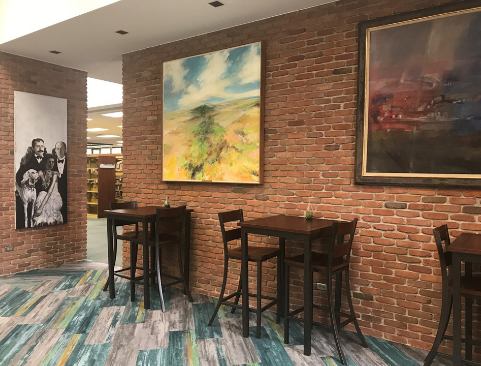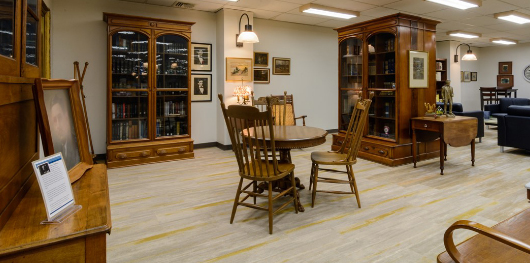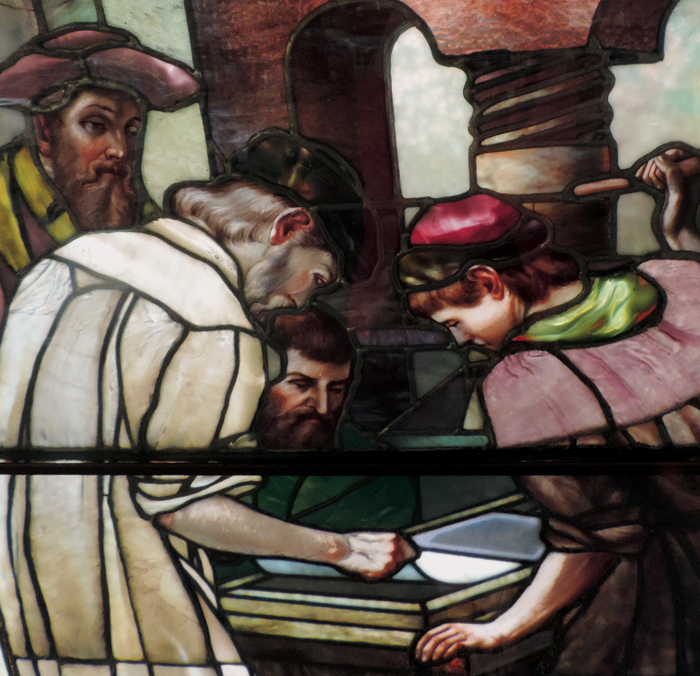

Art and Books
A Perfect Blend
Books and the fine arts are natural companions. Morrisson-Reeves houses not only books, magazines, and local history but also showcases works of art to enrich the lives of patrons.
Morrisson-Reeves Library contains an extensive collection of paintings created by local artists. From its founding, donors have been generous in gifts of art. Included are excellent examples of early Richmond and early Indiana painters, classic antique furnishings, and exceptional hand-wrought items.
The library’s art collection gives it the feel of an art museum. Works from artists such as George Baker, Frank J. Girardin, John Albert Seaford, T. C. Steele, John Elwood Bundy, Marcus Mote, Edna Cathell, Ray Stevens, and Doris Turnbaugh are prominently displayed.
Start at the Main Service Desk for a self-guided art and history tour that showcases the library’s rich history, art, and architecture.

Prized Windows From
Louis Comfort Tiffany
Probably the most highly prized of Morrisson-Reeves’ possessions are the Tiffany windows, designed by the Tiffany Glass and Decorating Company of New York. They are excellent examples of the secret technique known as “Favrile Glass.” Except for the details of faces and arms, which are painted on, most of the light and shade effects are achieved by folding the glass to create variations in light.
The large window shows Johann Gutenberg (1398 – 1468) demonstrating his system of movable type. The smaller windows pay tribute to European writers and feature typographical symbols of early printers: William Caxton, England’s first ; Aldus Manutius of Venice ; Simon Vostre, French printer, and the Flemish publisher, Christophe Plantin with his motto, “patience and labor.”
In the small panels, two quotations are entwined in ribbon. “Books let us into the souls of men and lay open to us the secrets of our own” is from William Hazlitt (1778-1830). The other, “Study as if you were to live forever; live as if you were to die to-morrow” is attributed to Isidore of Seville (560-636).
The great-grandchildren of Robert Morrisson donated these windows to memorialize their father, grandfather, and great-grandfather. They were originally installed in the bay window on the north side of the Reading Room on March 4, 1895. They are now displayed in the north windows overlooking The Reading Garden.
